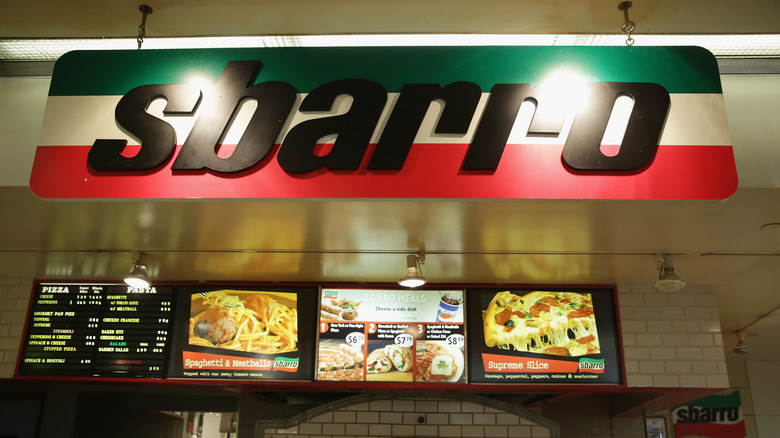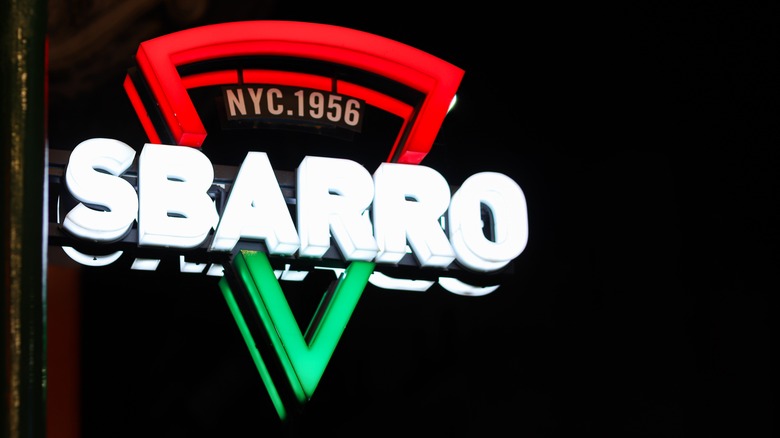The Rise And Fall Of Sbarro, The Food Court Superstar
Many of us have nostalgic memories of cheap, greasy pizza slices served up at the local mall food court. Although nowadays, most of us look at mall pizza and see nothing but pizza red flag. There was a time for many of us when going to the food court for a slice was enjoyable. However, much like these memories, not all food court pizzas are built to last.
Sbarro is perhaps the quintessential example of food court pizza that rose and eventually fell from grace. The New York-style pizza chain grew to popularity in food courts in particular, with few locations existing outside of malls. However, as malls became less trendy and competition like online shopping became more and more prevalent, Sbarro saw massive losses and experienced severe decline through the years.
There were attempts to establish Sbarro in other markets, including opening international locations and creating a line of store-bought frozen pizzas, the latter of which proved unsuccessful. Still, it was too little too late, and Sbarro became yet another popular pizza chain to file for bankruptcy in 2011.
The history of Sbarro
Sbarro got its start in 1956 as a family business in Brooklyn. Led by Carmela Sbarro, the delicious pizza slices she made quickly rose to popularity, and as a result, more locations were opened selling the family's pizza. However, it wasn't until 1970 that Sbarro opened its first mall location, which laid the groundwork for what would eventually be the franchise's empire.
The '80s and '90s were a period of growth for Sbarro. Locations began popping up in malls around the United States, and eventually internationally, featuring pizzas served by the slice for kids and pastas and salads for adults. However, by the early 2000s, competition from other pizza chains like Pizza Hut and Domino's had greatly increased, and Sbarro struggled to keep up.
The downswing in revenue led to Sbarro filing for bankruptcy multiple times. This caused massive closures for the company across America, with nearly half of its United States locations closing in 2014. Ironically, its international locations are still holding strong.

